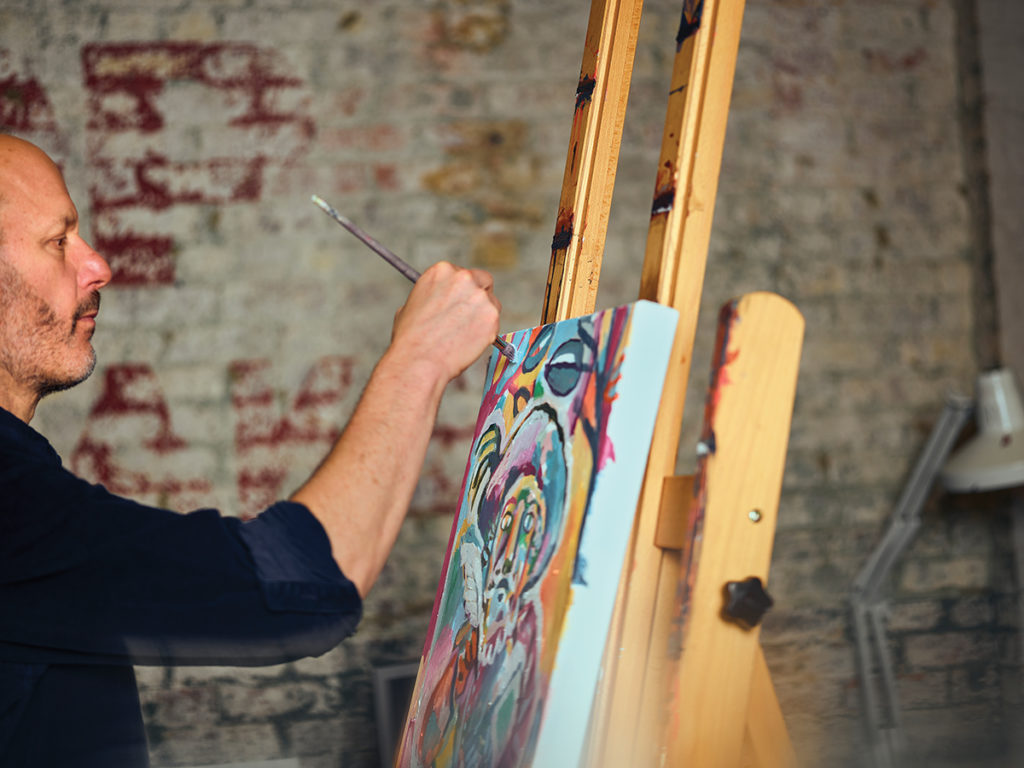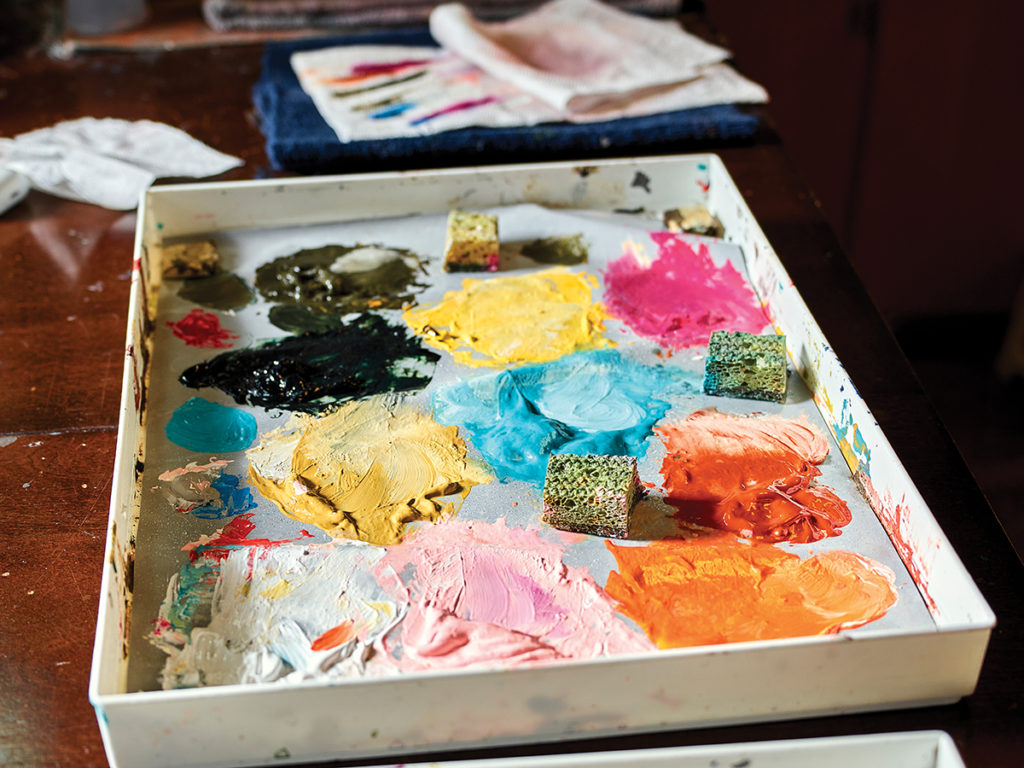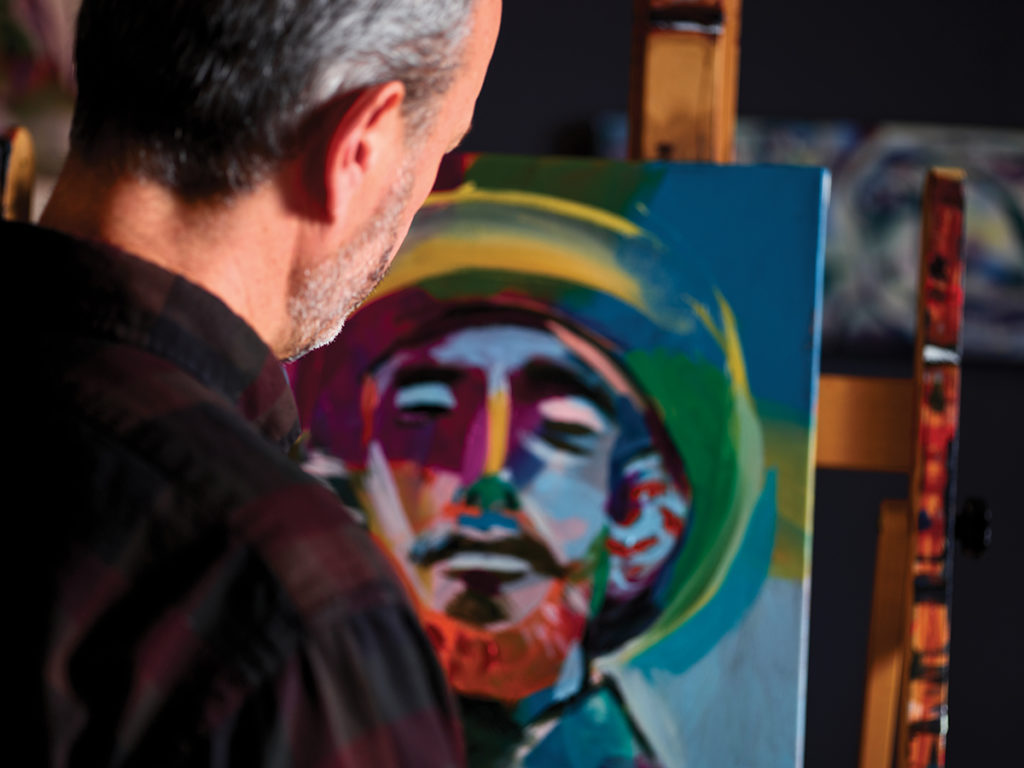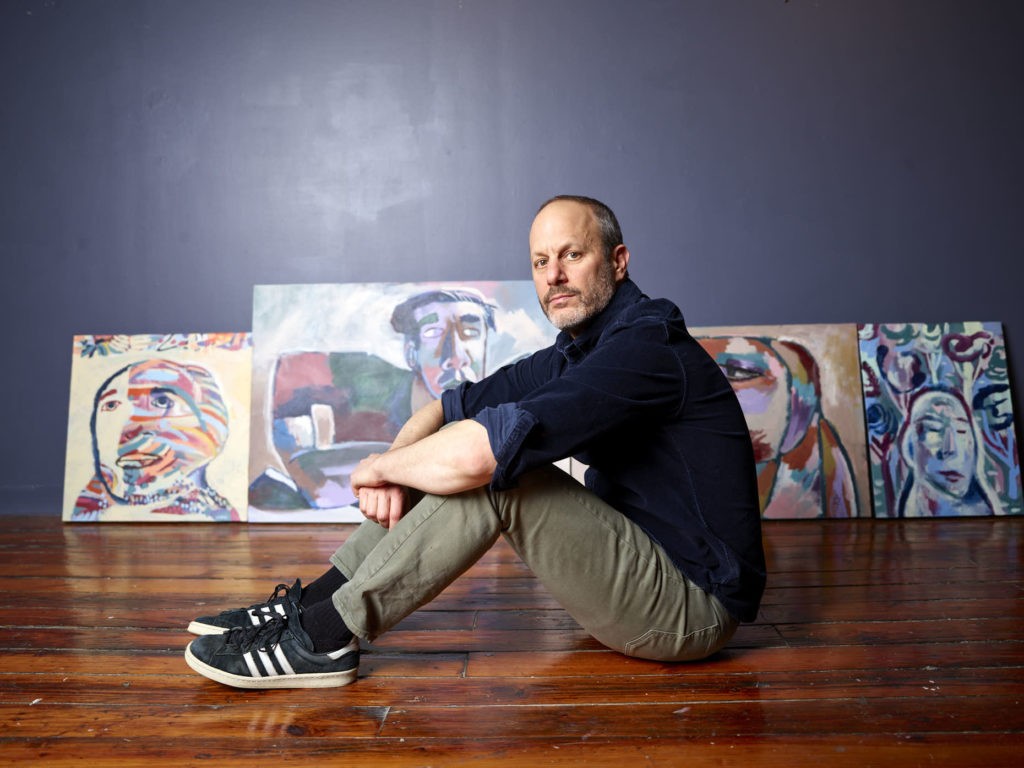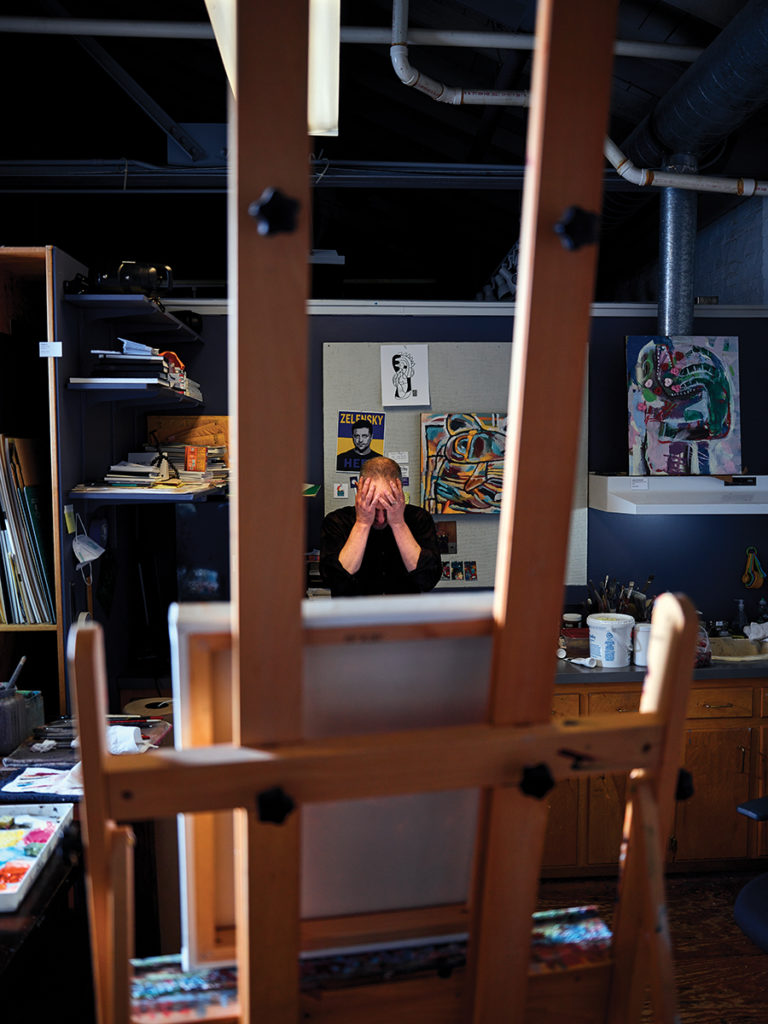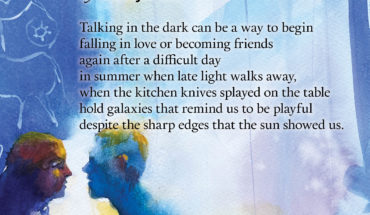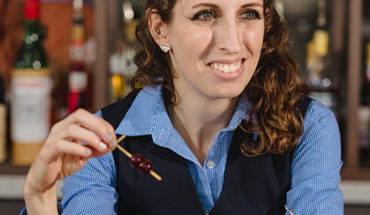This Raleigh artist works in acrylic paint, but also in pen or charcoal, capturing the mystery inside his subjects.
by Garrett Bethmann | photography by Joshua Steadman
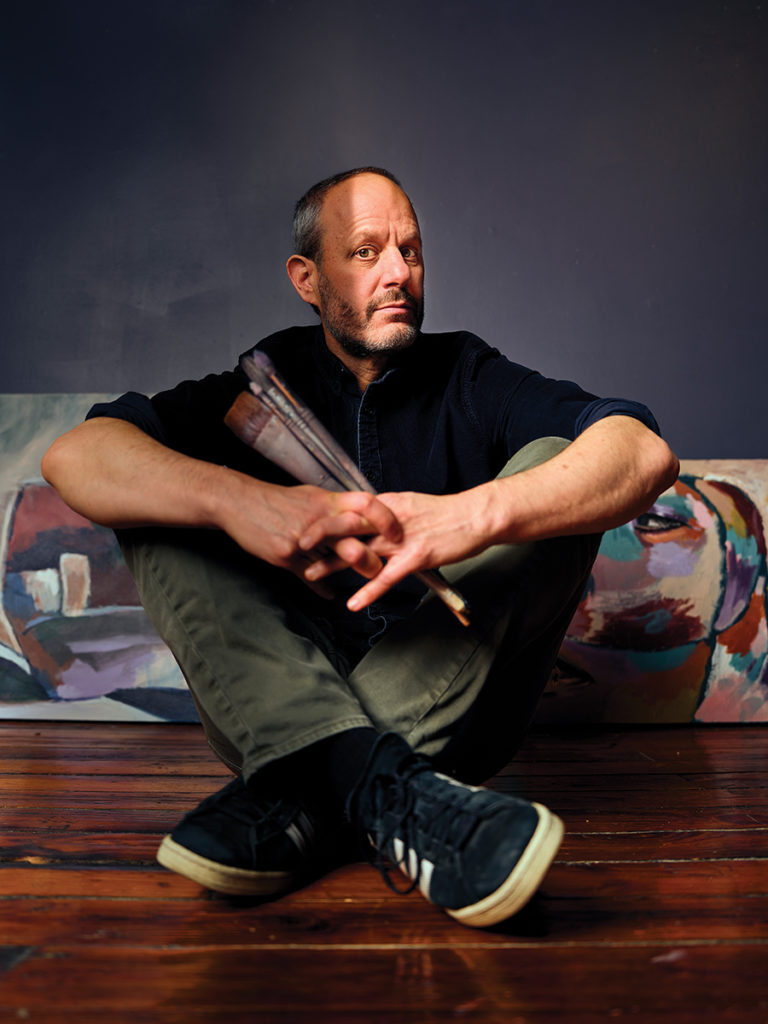
I wish I dreamt in the way that an Adam D. Cohen painting looks. Walking through the artist’s downtown Raleigh studio at Artspace on a calm Wednesday morning, I’m moved by the big colors, kinetic lines and gloriously distorted figures that vibrate off the wall. Faces percolate in puddles of color and scenes twist in spatial idiosyncrasies — they hint that the laws of time and space are merely suggestions. I feel a striking emotional connection to them.
“I’m painting characters from the inside out. These distortions take on a metaphorical and symbolic feeling,” says Cohen. “I’m toggling between the realism you see on the surface and the abstract mystery that is under the surface of every single person.”
He tethers together abstraction and realism in his portraits, and his techniques and modalities are as varied and of the moment as the human experience. Cohen’s subjects are created from observations and admiration of different figures in real life, paintings or photographs that catch his eye.
“All of those sources are just fodder for conjuring entirely new people, with their own stories — stories that can only be known through the projections of the viewer.
They’re essentially Rorschach tests,” says Cohen. Cohen first learned about how exaggeration and characters could tell a story when he interviewed Pulitzer Prize-winning cartoonist Doug Marlette of The Charlotte Observer in the sixth grade. (The two stayed in touch, and Marlette even helped Cohen get several of his editorial cartoons published as a teenager.)
Cohen’s heroes were illustrators inspired by cartoons and Impressionism, which gave him a starting point on his own artistic journey. “That is all about stretching the figure, distorting the figure, and that has made its way into my painting,” he says. “I saw a lot of fine art that did that and I realized, Oh, you can do this.”
Over the years, Cohen’s had a wide variety of career opportunities — but each has had a creative thread. He’s worked in corporate advertising, had a hand in recording short film projects (he entered a few into festivals, but found the process “too long and expensive”); entertained crowds as a stand-up comic (he was a regular at Goodnights Comedy Club and Kings in the early 2010s); and co-created an animated pilot for Adult Swim (“It was about a cereal mascot named Major Flake and all the other mascots who worked at Soggy Cereals, Inc.” — but, alas, it didn’t get picked up).
As such, Cohen’s artistic vision has never seemed to develop into any one style or mode, which was something he initially felt unsure about. “I didn’t show my work for decades because I hadn’t picked a style. I realized that maybe my style does not have one style,” says Cohen.
Cohen’s art comes in myriad modes and textures, from dizzying pen drawings to charcoal screeds to fantastical oil canvases. But in all of them, Cohen interprets the human figure to open up a dialogue between the conscious and subconscious.
“What it all has in common is that you are seeing that subterranean aspect of people bubbling up, but you have these realistic handles that orient you,” he says. “Your eye goes between trying to figure the abstract stuff out, with the handles that give you a clue, and it engages you physically, and unwittingly, emotionally.”
Artspace creative director Annah Lee says that Cohen’s interpretation of the human figure is distinctive, even for a city with artists like Alia El-Bermani, Shaun Richards and Pete Sack operating in similar form. “Adam’s use of the figure is something different. He’s combining abstraction with figurative work,” says Lee. “It’s a joyful perspective to the conversation.”
Caitlin Cary, owner of The Pocket Gallery as well as a Cohen painting from his recent “Covers” series, agrees that he is bringing a fresh perspective to Raleigh’s art scene. “Adam has the spirit of a cartoonist in a very fine and very serious painter. There is an ease in capturing a gesture or a face that feels fast,” says Cary. “It’s inviting and inscrutable.”
One reason Cohen’s work is so inviting is that his various styles can appeal to a lot of different perspectives. “I find that no matter how far I go in any direction stylistically, there is someone out there for it. It may turn off some people, but it wakes up other people who weren’t necessarily turned on by what I was doing,” says Cohen.
That range and need to try different things is exactly why Cohen likes to create in the moment. “My natural inclination is to go to surprises and to not repeat myself, to have the moment at the edge of the cliff where you don’t know what this thing is, and to then resolve it. That’s what I get a real high from, walking that tightrope,” says Cohen.
To exemplify this approach, he reveals three versions of this month’s WALTER cover in various states of completion, each using the same color palette of maroons, blues, greens and yellows. One dabbles in light Cubism with saturated pockets of color, another bounces off the canvas as a joyful caricature and yet another stands refined in bright washes and wisps of oil paints.
His technique is rooted in a desire to work quickly and intuitively. “My formal tools and techniques align with my larger goal of ‘getting out of the way’ of the work as much as possible, letting something happen ‘through’ me rather than being so controlled ‘by’ me,” says Cohen.
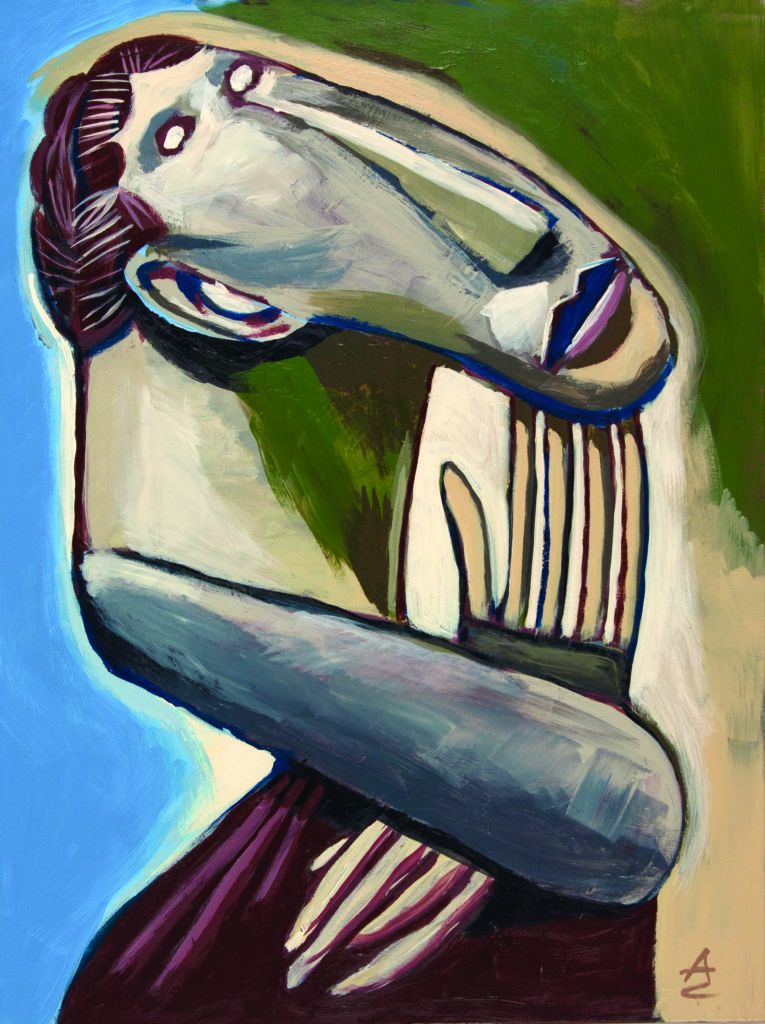
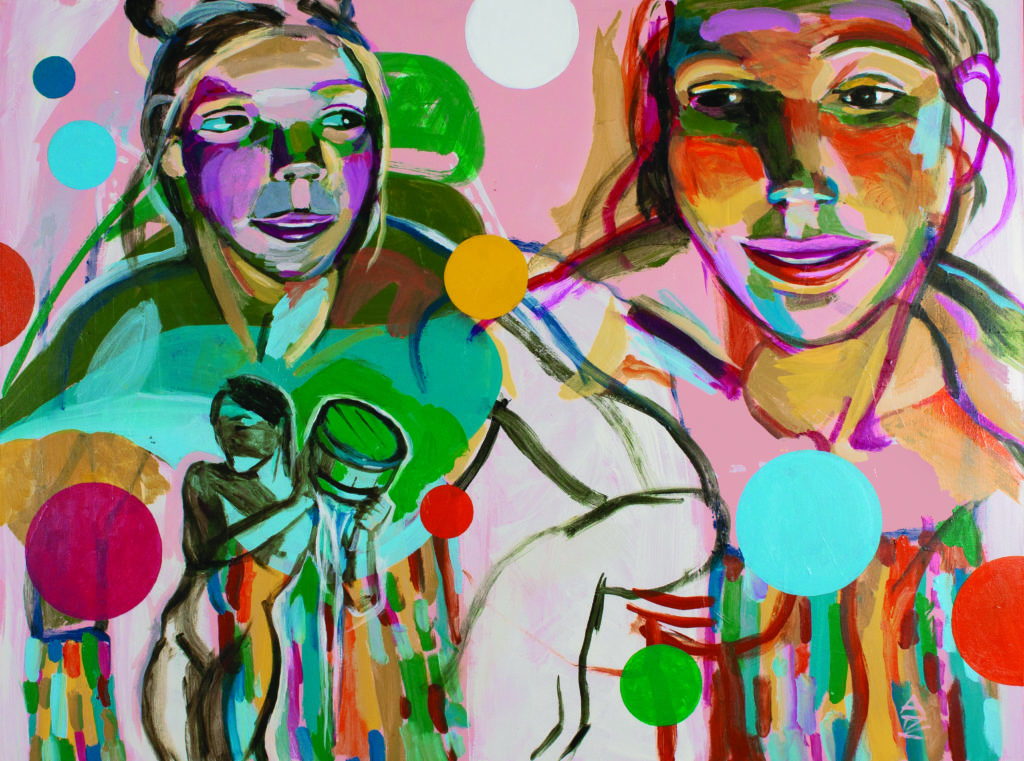
Any piece of his work can incorporate different dashes and splashes of color and style as he moves at the speed of spontaneous creation. “Working improvisationally helps that happen, and is a big reason I use acrylic paint, which dries faster than oils, giving me the ability to quickly respond to what’s taking shape — altering forms, color distribution, changing direction completely,” says Cohen.
To amp up the interaction of abstract tones and human forms, Cohen uses unnatural color palettes. “I feel it helps the images live in a less literal, more symbolic/archetypal space. This approach to color is definitely influenced by Fauvism, Post-Impressionism and German Expressionism,” says Cohen.
To Lee, Cohen’s continuous evolution and stylistic change is one of his most appealing features. “From day to day he’s always pushing himself and pushing new ideas,” says Lee. “There’s this sort of cohesion. He’s an artist that is always playing with different ideas and it brings a fresh perspective.”
“It’s collaborating with something bigger than me. A lot of it I don’t know what it is going to be when I start off painting,” says Cohen. “You can see the layers and you don’t need to understand or know the history, but when you pick up on it, there is this depth.”
This article originally appeared in the January 2023 issue of WALTER magazine.

